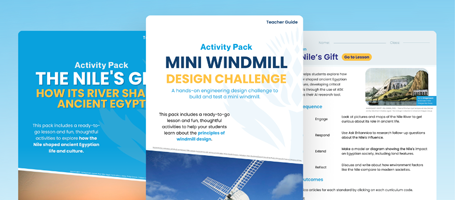Introduce young minds to the curiosities of life cycles using these cool Britannica ideas!
Learning about life cycles not only illustrates the wonderful variety and remarkable features possessed by vertebrates and invertebrates, it is also an easily digestible starting point for young minds before they foray into related, more advanced fields of study, such as Evolutionary and Systematic Biology.
1. When scientists talk about cycles they are talking about events that occur in a sequence repeatedly. Discuss and define the term “life cycle”.
According to Britannica a life cycle is the series of stages of form and activity through which a living thing passes from a beginning stage (as an egg) in one individual to the same stage in its offspring.
2. Create a plant growing station and record the stages of development that occur using scientific diagrams or photographs.
3. Watch the time lapse video Time Lapse of Fern Sprouting and illustrate the main life stages of the plant.
Credit: Learjet15 on Youtube
4. Watch the Britannica video Toad.
Discuss the life stages of a toad: starting from an egg (frog spawn); the egg becomes a tadpole (larval stage); tadpoles (or pollywogs) mature and they begin to grow hind legs while their gills are replaced with lungs; front legs grow and the tadpole now looks like a tiny frog with a tail; finally a frog, breathes with lungs, has no tail and eats insects by catching them with its sticky tongue.
Use the video to create a flow chart illustrating the life cycle of a Toad.
- Obtain silkworm eggs from a local pet supplier.
- In the warmer Spring temperatures, the eggs will hatch and caterpillars will emerge. Feed the caterpillars regularly on mulberry leaves. Watch as the caterpillars grow and change into Pupa and then a Moth.
- Using their observations have students write an informative text (an explanation on the life cycle of a silk worm).
6. Use a Venn Diagram to compare the lifecycles of two different living things: Honeybee Life Cycle and Jellyfish Life Cycle.
What are the differences and similarities?
7. Students choose a particular life cycle and represent it visually, e.g. a drawing, a diorama, animation, presentation, video or model.
8. Learn about Metamorphosis using the Britannica article.
Explain the difference between Complete Metamorphosis and Incomplete Metamorphosis.
9. Role play the metamorphosis process for a butterfly.
In groups, students create a script, assign each other different roles including a narrator and create their own costumes. Students may also choose to include predatory animals and insects like spiders, wasps, lizards and birds. Each group then performs their play in front of the class to teach other students about metamorphosis. As an extension activity, ask each group to create a short film using their script!
More Educator Resources
Sign up with your email for more free resources from Britannica.
These activities and resources have been created using content from Britannica School, the go-to site for safe, comprehensive student research. Contact your librarian to find out if your institution already has access. Find out more about Britannica School or set up your own free trial.

